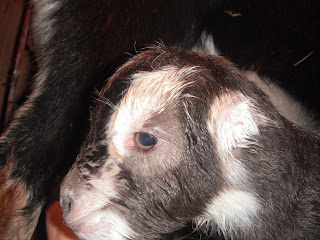April is around the corner and I can feel it. We are all over winter. It snowed a couple inches the other day and the kids were puzzled - like isn't it summer yet? It has been pleasant and warm in the afternoons. We've been spending a lot of time outdoors. The snow is finally wet enough to make snow balls. I was trying to get the kids excited about rolling big snow balls yesterday. I think the snow has lost all interest for them - they are ready for it to be gone and so am I.
There are depressions around each tree, where the snow is starting to melt and recede - a sure sign of spring. Yesterday Avery wanted to go up to the garden and pick peas. I humored her and we walked up to where the peas usually are and talked about the life cycle of peas. I pushed her in her summer swing and together we dreamed of long summer days in the garden.
Our beloved farm helper, Becca may be getting a real job this summer, one that actually pays well - and not just in eggs and vegetables. We love her so much and wish her the best in everything she does...and we are going to miss her desperately. I've been thinking of our summer and what is possible. The last two summers have been tricky as Avery as been a baby and a small, somewhat needy toddler. I think now that she is growing into a mature young lady of two and a half, I think that the kids and I will be able to accomplish much more together.
I've been resolving myself to earlier productive morning while the kids are still sleeping. Milking several goats in a row with both kids fighting over who fills grain tubs and whining -asking when are we going to be done - is more than enough to inspire me to get up early and milk solo. We will see how the summer routine shapes up but I'm gradually resolving myself to early productive mornings, milking with a baby monitor nearby. Other thoughts I've had lately have been that if I have to start buying sandwich bread it is not the end of the world. Getting farm chores done and getting the kids out to the playground or swim lessons are more important. On that note, I'm going to start looking for used playground equipment to set up near the garden. I'm also thinking a screened tent with a small table would be helpful.
April is for hatching chicks, starting our milking routine, starting seeds, planning and preparing. I started tomatoes, peppers, eggplant and the 8-10 wk flowers on Monday. Today I'm going to transplant some herbs into pots for spring snipping. April is an ugly month here, melting snow, dirty white and eventually brown and muddy. For all the farm smells coming to life, animal housing that needs cleaned out and snow melting, exposing the clutter here and there, well I'll take it. I'm ready for April.
Over the the Last Few Days
3 months ago















































